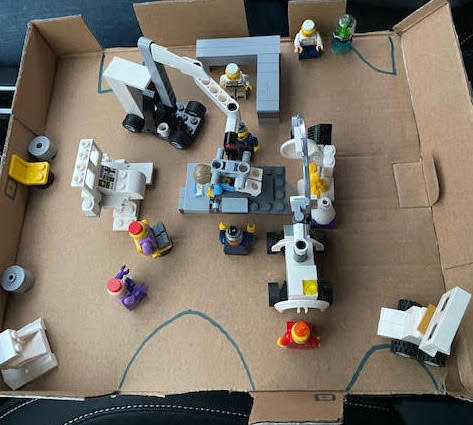Dr. Helen Hann, an anesthesiologist at John Radcliffe Hospital in the United Kingdom, had been interested in awake spine surgery for 12 years but hadn't found a surgeon willing to take up the challenge with her.
"The reactions I got from the surgeons I approached were universally ones of trepidation," Dr. Hann told Becker's. "I think it's a big thing to ask a surgeon to operate on an awake patient. You're very aware the patient is hearing everything you're doing, and they can see everything you're doing. That adds pressure. So it's a big thing, it's a big ask. It took a lot of courage."
The surgeon who was ready to take the challenge on was Dr. Murtuza Sikander, who works at the same hospital. Dr. Hann and Dr. Sikander were both familiar with awake surgeries from performing awake craniotomies.
Collaborating with Dr. Alok Sharan
The pair came across the work of Alok Sharan, MD, through research and approached him for advice. Eventually Dr. Sharan, of NJ Spine & Wellness in East Brunswick, N.J., crossed time zones in the summer of 2020 to teach them how to perform spine surgery on awake patients.
"We had a conference call and then things started to just snowball from there," Dr. Sikander said.
For Dr. Sharan, teaching remotely involved a combination of straight discussion about protocol and overseeing simulations with a virtual platform that he helped develop, called Doc Social.
"What they would do is simulate the whole surgery from end to end and have someone take a video," Dr. Sharan said. "Then I would go and basically view their videos and tell them my comments and thoughts of improvement. They did that multiple times. I think they ran about two or three simulations, and then I met with the team through a live session as well."
Dr. Sharan said the biggest challenge teaching was handling situations when routines didn't go as planned, since he couldn't be there in person to guide them.
Reframing and overcoming challenges
For Dr. Sikander and Dr. Hann, the biggest obstacle was rallying their surgical team and helping them reframe how they think about the surgical procedure.
"What we did was a ground up approach or stakeholder buy-in where you give a member of a team a very simple objective," Dr. Hann said. "You say, 'Decide what works for you. Come back, and let's try it. This is your idea. You own it.' That way, you get enthusiasm; you get the best out of the person that you're asking this task of, [and] you're not dictating to them."
To help choreograph the team, Dr. Hann and Dr. Sikander also used a Lego set to map out and rehearse the team's positioning in the operating room through three stages: before patient arrival, patient preparation and surgery.
"Every member of staff knew where they were supposed to stand, where they were supposed to move, at what stage they were supposed to move [and] which equipment would move," Dr. Sikander said.
 Photo courtey of Dr. Helen Hann and Dr. Murtuza Sikander
Photo courtey of Dr. Helen Hann and Dr. Murtuza Sikander
The process of getting National Health Service approval for the surgeries was comprehensive, Dr. Sikander said. It took about nine months to get the first procedure OK'd between forming protocols and ethics, demonstrating competence and going through different committees.
However, procedures like awake spine surgery have been well-received overall by the NHS, which governs healthcare in the U.K., Dr. Sikander said.
"The way the NHS works is, it's all centrally funded," Dr. Sikander said. "So if you're not having to pay for resources to keep a patient in a bed, that's actually money saved. If you don't cancel a patient on the day for lack of hospital availability, that's money saved. If a patient goes back to work early with better rehabilitation, that's health economics saved, so it's only cost beneficial."
A bright outlook for awake spine surgery and remote education
Dr. Sikander and Dr. Hann have completed five awake spine surgeries, and seven more are scheduled in the future. So far, the patient feedback has been positive, they said.
The pair is performing lumbar decompressions, and plans to offer awake spinal fusions and endoscopic surgeries are in the works, they said.
Dr. Sikander said he believes the awake procedures will remain, and he plans to develop the program and teach other surgeons.
Dr. Sharan said he also has an optimistic outlook on remote spine surgery education, and he's formalizing a remote teaching program for awake spine surgery.
"It's the future," he said. "I think that from just a pure learning perspective, you'll see less and less people going to these weekend cadaver courses, and more people will be in their remote locations while I'll be in New York or New Jersey teaching a particular technique."

